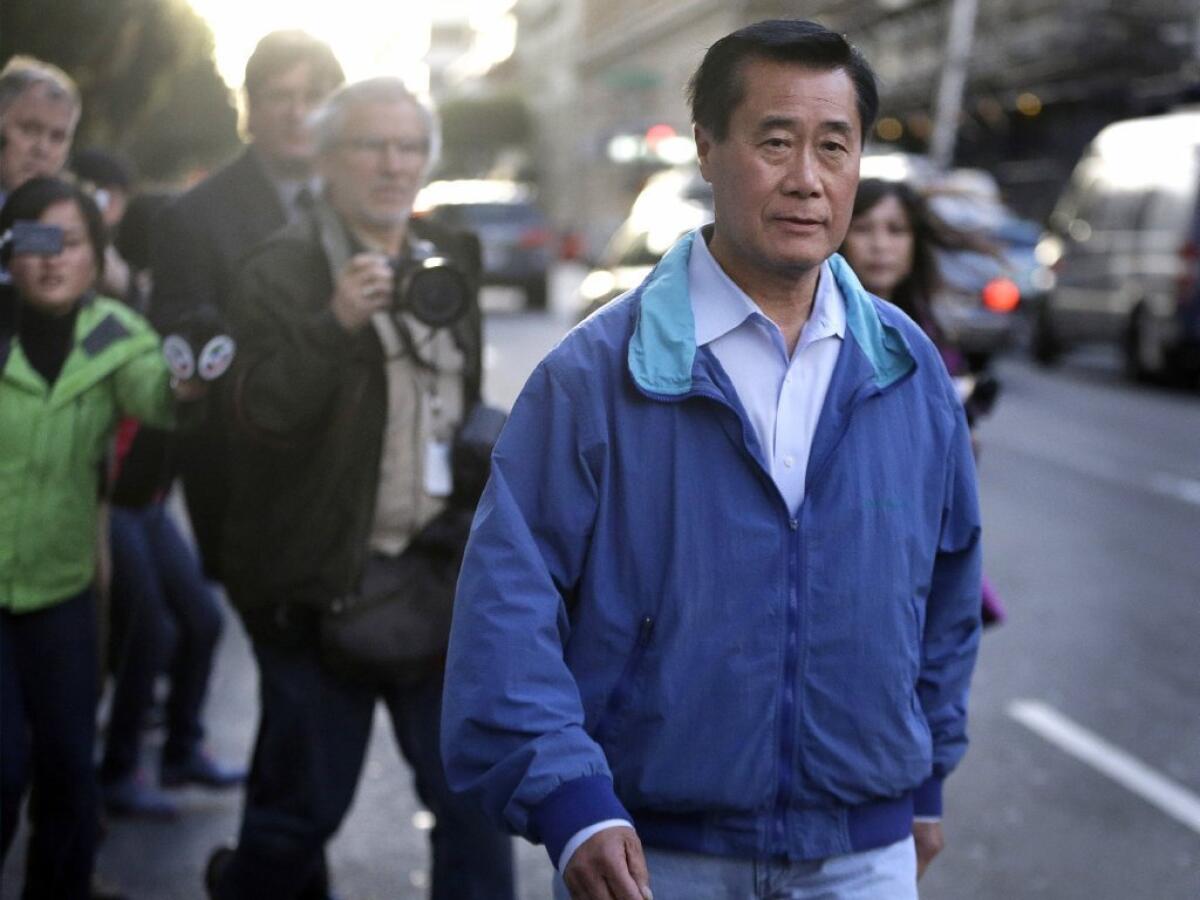Sting like a bee -- the feds’ tricky enforcement tool

Seems like there are more stings in the headlines lately than there are on a kid who steps on a moon jellyfish.
San Francisco’s Leland Yee, the Democratic state senator whose fellow Democrats want to put an “ex” in front of that title ASAP, is looking at federal gun trafficking and wire fraud charges stemming from an FBI sting operation.
Last year, another Democratic state senator, Ronald S. Calderon, from Montebello, was indicted in a couple of alleged pay-to-play legislative deals. In one, he allegedly accepted thousands of dollars, including a job for his daughter, after an undercover FBI agent posing as a film exec asked for help to change the state’s film tax credits.
Government sting operations can create uneasiness in the public mind — an uneasiness that defense lawyers capitalize on — because they seem to raise the question: Are stings creating criminals or catching criminals?
Sacramento has felt the corruption sting before. In the late 1980s, a federal operation nicknamed Shrimpscam — for undercover agents pretending to represent a shrimp processor — sent several lawmakers to prison after they agreed to sponsor shrimp-helpful legislation in exchange for bribes.
Shrimpscam’s big brother, 10 years earlier, was Abscam, a Capitol Hill sting that put a U.S. senator and members of Congress in prison for agreeing to political favors in exchange for bribes. The unsurprising political blowback in D.C. from Abscam prompted the FBI to draft guidelines to govern federal stings.
Laurie Levinson was a federal prosecutor who’s now a professor at Loyola Law School, and I asked her about stings as legal quicksand.
“Stings have always been controversial because people don’t like the idea that police need to act like crooks to catch crooks. However, that is the reality. Especially in the political corruption arena, defendants are unlikely to conduct improper activities in the open. While undercover operations are completely legal, they often open the door to entrapment claims. Police and prosecutors need to be careful and make sure they are not seen as the ones who are planting illegal schemes in the suspect’s mind.”
I put the same point to Erwin Chemerinsky, professor and founding dean at UC Irvine’s law school. He said: “In order for it to be entrapment, it has to be a crime that a person was not likely to otherwise commit. The question must be whether law enforcement has induced a crime that otherwise would not have occurred, or whether it is just providing the opportunity for the criminal to get caught. As a legal matter, entrapment is a difficult defense to prove.”
But sometimes, defense lawyers can succeed in bending that accusatory finger back toward the accusers. Automaker John DeLorean was tried on federal drug-smuggling charges here in 1984. The prosecution showed jurors a videotape of DeLorean fingering a case full of cocaine, which he declared was “better than gold.” DeLorean, who was trying to save his struggling auto company, said the charges were “a pure frame-up” by the FBI. His attorney, Howard Weitzman, pursued that defense, and a Los Angeles jury acquitted DeLorean.
Calderon’s L.A. attorney, Mark Geragos, may plow the same soil. He said after his client’s arrest: “The only one so far who has done anything improper is the government.”
The FBI has been using stings against terrorism since 9/11, as it did in the case of Amine El Khalifi, who was wearing a dud “suicide coat” supplied by undercover agents when he was arrested two years ago as he walked toward the U.S. Capitol, intent on blowing it up.
There haven’t been a lot of complaints about those stings. No surprise.
ALSO:
Michael McFaul, an eye on Russia
Where did the DWP’s $40 million go?
What Long Beach can teach us about cycling, and politics
Follow Patt Morrison on Twitter @pattmlatimes
More to Read
A cure for the common opinion
Get thought-provoking perspectives with our weekly newsletter.
You may occasionally receive promotional content from the Los Angeles Times.







